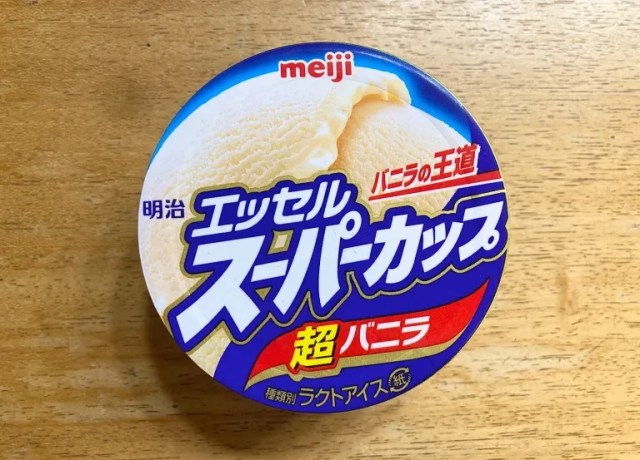
Applying the inari sushi concept to frozen desserts.
Ice cream cones seem perfectly natural to modern sweets fans, but the custom itself of eating ice cream precedes the practice of putting it into cones by over 100 years, dessert historians estimate. It’s only by benefit of being born after that development in humanity’s communal culinary cultural history that you and I are able to say “Yeah, let me have a scoop of Pikachu and Fuecoco ice cream, in a cone,” and have that wish be granted as a matter of course.
But this begs the question, if people didn’t immediately realize that ice cream and cones were a winning combination, what other deliciously viable ice cream containment/delivery systems are we still overlooking today? Japanese confectioner Meiji is still willing to push the envelope, and it’s doing so in a way we never would have thought of by recommending we all try ice cream inari.
What’s inari, you ask? Fried tofu.
▼ Meiji’s ice cream inari concept photo
If you want to get technical about it, the fried tofu is actually called abura-age or aburaage. However, abura-age is the key ingredient in inari sushi, in which vinegared sushi rice is stuffed into little pillow-like pouches of fried tofu.
So if you can put rice in abura-age, why not ice cream? That’s the proposition put forth by Meiji, and we were easily convinced to give it a try, since we’ll take any excuse to eat ice cream, even ones that, honestly, sound pretty dubious.
Unlike some of the other recipe ideas on Meiji’s Essel Super Cup ice cream brand’s website, there’s no additional information on how to make ice cream inari, just the photo. Still, it seemed pretty self-explanatory. We simply grabbed a pack of ready-made abura-age at the supermarket and a cup of Super Cup Super Vanilla, the same flavor shown in Meiji’s ice cream inari photo. Then all we did was scoop up some of the ice cream…
…squeeze open an abura-age pouch…
…and fill it.
We weren’t sure how well this would go, since ice cream, obviously, has a more liquid consistency than the rice that’s ordinarily supposed to go inside the abura-age. To our relief, though, the ice cream was pretty easy to slide in, and from this angle, our ice cream inari looked exactly like regular old inari sushi.
But how does it taste? To our shocked surprise, not bad at all!
As a reminder, in Japanese “sushi” doesn’t mean raw fish, but instead refers to vinegared rice. Though you’d never mistake sushi rice for a dessert, the vinegar used to make it has quite a bit of sweetness to it, and it’s especially noticeable when it’s not accompanied by a slice of seafood. In other words, inari sushi became popular in Japan because abura-age, which is often seasoned with soy sauce and dashi (bonito stock) when cooking, has a mix of sweet and salty notes that nicely complements the sweetness of sushi rice. Those same characteristics, it turns out, also work well with the sweetness of ice cream. It reminded us just a bit of mitarashi dango, a traditional Japanese dessert of dumplings with a soy-based sweet glaze.
There are a few points of caution to be aware of, though, with ice cream inari. It’s a dessert you can’t linger over for too long, since the time spent scooping the cream into the tofu means that it’s going to be closer to melting when it’s ready to eat. Also, since the abura-age pouches are designed to hold rice that’s been pressed together, not cream that’s getting progressively meltier, you can expect to get at least a little ice cream on your hands, so you’ll want ot have some napkins ready.
Still, ice cream inari is definitely a fun and novel way to eat ice cream, and one that tastes far better than we thought it was going to. We’re already wondering if the idea would work even better with an ice cream that also employs traditional Japanese flavors, like matcha green tea, and we’re definitely looking forward to further testing.
Reference: Meiji
Top image: SoraNews24
Insert images: Meiji, SoraNews24
● Want to hear about SoraNews24’s latest articles as soon as they’re published? Follow us on Facebook and Twitter!
[ Read in Japanese ]

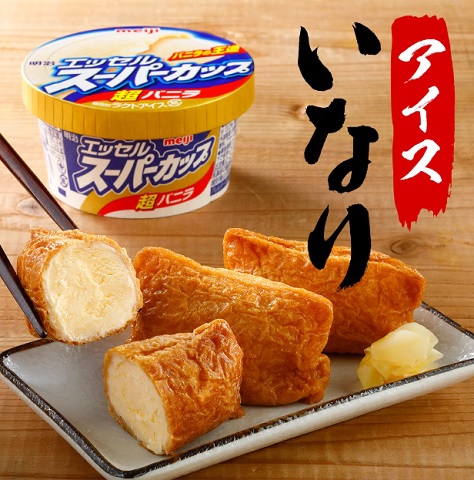
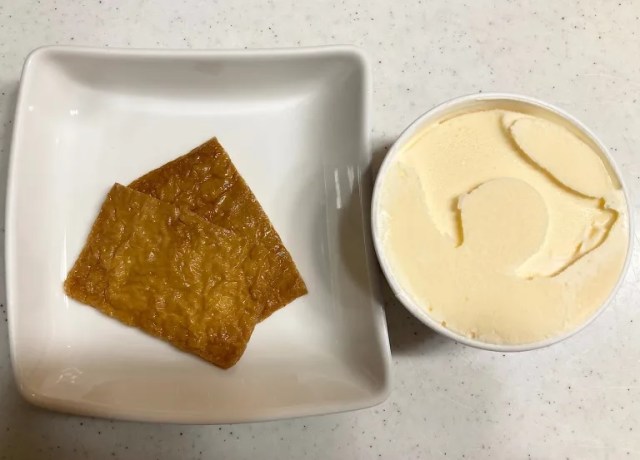
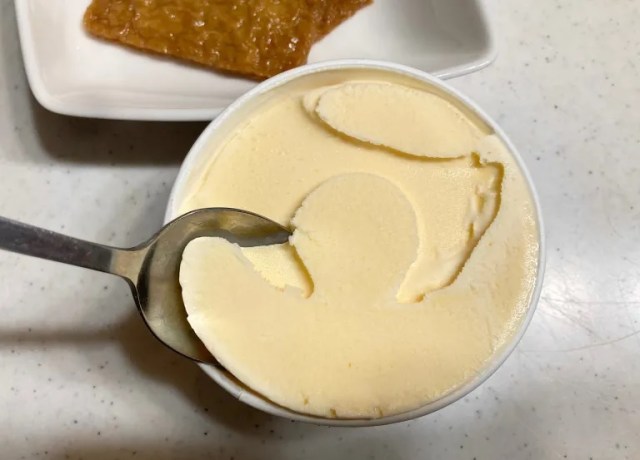
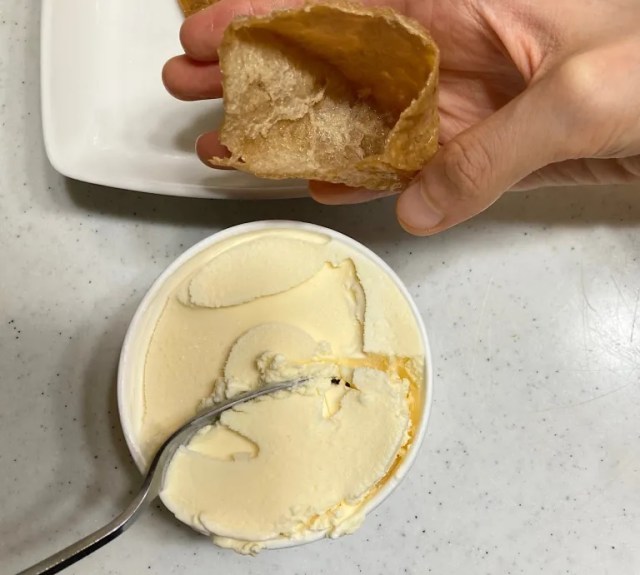
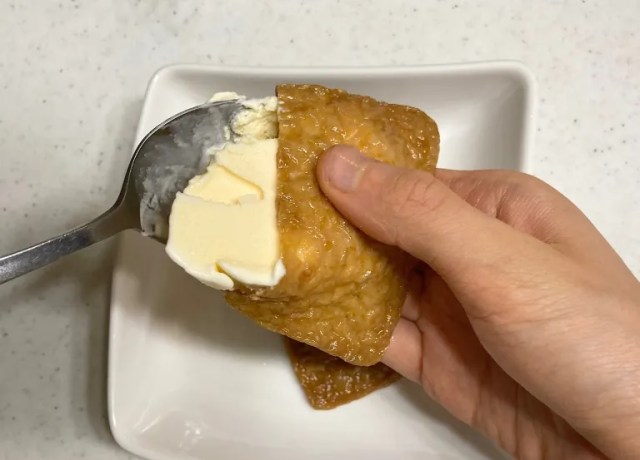
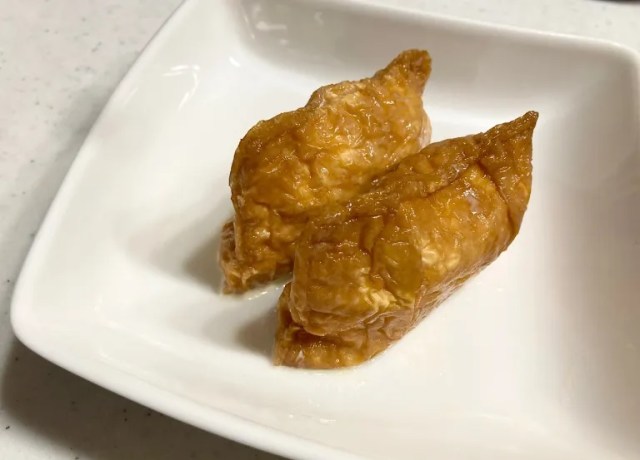
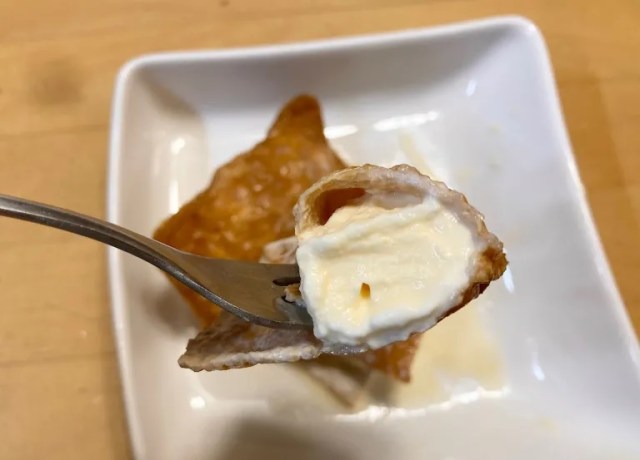
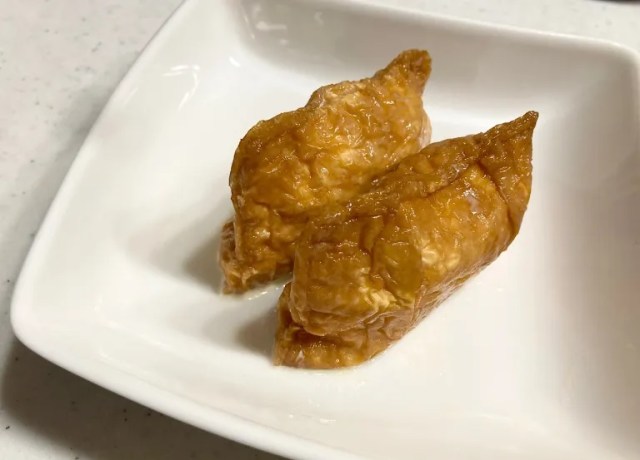
 Why does this sushi restaurant serve raw tuna in an ice cream cone?【Taste test】
Why does this sushi restaurant serve raw tuna in an ice cream cone?【Taste test】 Powering up our instant noodles with Nissin Cup Noodle’s instant tempura and abura-age【Taste Test】
Powering up our instant noodles with Nissin Cup Noodle’s instant tempura and abura-age【Taste Test】 10 awesome ice cream and popsicle brands to try when you’re in Japan
10 awesome ice cream and popsicle brands to try when you’re in Japan Instant tempura and abura-age from Cup Noodle maker Nissin coming to power up your noodle meals
Instant tempura and abura-age from Cup Noodle maker Nissin coming to power up your noodle meals Edamame fans unite! Zunda-flavored Meiji Super Cup ice cream is here
Edamame fans unite! Zunda-flavored Meiji Super Cup ice cream is here Starbucks Japan releases new drinkware and goods for Valentine’s Day
Starbucks Japan releases new drinkware and goods for Valentine’s Day We try an unusual buffet of dishes made from wild game at a roadside stop in Chiba
We try an unusual buffet of dishes made from wild game at a roadside stop in Chiba New KitKat pizzas are coming to Pizza Hut Japan
New KitKat pizzas are coming to Pizza Hut Japan Village Vanguard’s Blue Lucky Bag may have the most impressive piece of junk ever created
Village Vanguard’s Blue Lucky Bag may have the most impressive piece of junk ever created We followed Tokyo’s mystery walking map and ended up creating our own bar-hopping adventure
We followed Tokyo’s mystery walking map and ended up creating our own bar-hopping adventure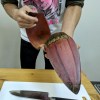 Mr. Sato eats banana flower, still isn’t sure what it tastes like, loves it anyway【SoraKitchen】
Mr. Sato eats banana flower, still isn’t sure what it tastes like, loves it anyway【SoraKitchen】 7-Eleven Japan has a hack for creating insanely delicious potato chip rice meals
7-Eleven Japan has a hack for creating insanely delicious potato chip rice meals “Hey, Japanese taxi driver, take us to the best seafood joint in Otaru!”
“Hey, Japanese taxi driver, take us to the best seafood joint in Otaru!” How to use Japan’s new self-checkout supermarket carts
How to use Japan’s new self-checkout supermarket carts Say hello to Japan’s new stationmaster cat!【Video】
Say hello to Japan’s new stationmaster cat!【Video】 10 times to avoid traveling in Japan in 2026
10 times to avoid traveling in Japan in 2026 Our 52-year-old pole dancing reporter shares his tips for achieving your New Year’s exercise goal
Our 52-year-old pole dancing reporter shares his tips for achieving your New Year’s exercise goal Starbucks Japan releases new Frappuccino and latte for Valentine’s Day
Starbucks Japan releases new Frappuccino and latte for Valentine’s Day Ramen restaurant’s English menu prices are nearly double its Japanese ones, denies discriminating
Ramen restaurant’s English menu prices are nearly double its Japanese ones, denies discriminating Princess Mononoke magnets return just in time to treat yourself to awesome anime decorations
Princess Mononoke magnets return just in time to treat yourself to awesome anime decorations Umamusume anime girl plushie recalled for having parts she absolutely should not have【Pics】
Umamusume anime girl plushie recalled for having parts she absolutely should not have【Pics】 Giant hotel rooms in Osaka reflect the new non-niche face of travel in Japan.
Giant hotel rooms in Osaka reflect the new non-niche face of travel in Japan. Japanese women showing rebounding interest in giving Valentine’s Day chocolate【Survey】
Japanese women showing rebounding interest in giving Valentine’s Day chocolate【Survey】 We ate sushi made from Japan’s most expensive tuna ever【Taste test】
We ate sushi made from Japan’s most expensive tuna ever【Taste test】 Starbucks Japan ready to get Year of the Horse started with adorable drinkware and plushies【Pics】
Starbucks Japan ready to get Year of the Horse started with adorable drinkware and plushies【Pics】 7-Eleven Japan starts new temporary luggage storage service in over 300 branches
7-Eleven Japan starts new temporary luggage storage service in over 300 branches Disillusionment at Tsukiji’s tourist-target prices led us to a great ramen restaurant in Tokyo
Disillusionment at Tsukiji’s tourist-target prices led us to a great ramen restaurant in Tokyo Starbucks teams up with 166-year-old Kyoto doll maker for Year of the Horse decorations【Photos】
Starbucks teams up with 166-year-old Kyoto doll maker for Year of the Horse decorations【Photos】 Tokyo’s Tsukiji sushi neighborhood asks tour groups to stay away for the rest of the month
Tokyo’s Tsukiji sushi neighborhood asks tour groups to stay away for the rest of the month Survey asks foreign tourists what bothered them in Japan, more than half gave same answer
Survey asks foreign tourists what bothered them in Japan, more than half gave same answer Japan’s human washing machines will go on sale to general public, demos to be held in Tokyo
Japan’s human washing machines will go on sale to general public, demos to be held in Tokyo We deeply regret going into this tunnel on our walk in the mountains of Japan
We deeply regret going into this tunnel on our walk in the mountains of Japan Studio Ghibli releases Kodama forest spirits from Princess Mononoke to light up your home
Studio Ghibli releases Kodama forest spirits from Princess Mononoke to light up your home Major Japanese hotel chain says reservations via overseas booking sites may not be valid
Major Japanese hotel chain says reservations via overseas booking sites may not be valid Put sesame oil in your coffee? Japanese maker says it’s the best way to start your day【Taste test】
Put sesame oil in your coffee? Japanese maker says it’s the best way to start your day【Taste test】 No more using real katana for tourism activities, Japan’s National Police Agency says
No more using real katana for tourism activities, Japan’s National Police Agency says Starbucks Japan reveals new sakura drinkware collection, inspired by evening cherry blossoms
Starbucks Japan reveals new sakura drinkware collection, inspired by evening cherry blossoms Updated cherry blossom forecast shows extra-long sakura season for Japan this year
Updated cherry blossom forecast shows extra-long sakura season for Japan this year Human washing machine pods coming to Japanese hotels【Photos】
Human washing machine pods coming to Japanese hotels【Photos】 Tokyo café says the best ice cream topping is two more ice cream cones
Tokyo café says the best ice cream topping is two more ice cream cones Coffee in an ice cream cone, the perfect treat we never knew we wanted available at Tokyo cafe
Coffee in an ice cream cone, the perfect treat we never knew we wanted available at Tokyo cafe How do other flavors of ice cream rice compare to Meiji’s matcha ice cream rice recipe?
How do other flavors of ice cream rice compare to Meiji’s matcha ice cream rice recipe? Fried Oyster Ice Cream: the taste of the sea in a Japanese soft serve dessert【Taste Test】
Fried Oyster Ice Cream: the taste of the sea in a Japanese soft serve dessert【Taste Test】 Soft serve ice cream robots create the perfect cone in under 40 seconds【Video】
Soft serve ice cream robots create the perfect cone in under 40 seconds【Video】 5 of the best ice creams to try in Japan right now【Taste Test】
5 of the best ice creams to try in Japan right now【Taste Test】 Make matcha ice cream rice in your rice cooker with this easy recipe from Meiji
Make matcha ice cream rice in your rice cooker with this easy recipe from Meiji Forget cups and cones – Krispy Kreme Japan is sandwiching its ice cream inside doughnuts!
Forget cups and cones – Krispy Kreme Japan is sandwiching its ice cream inside doughnuts! How has inflation affected the price of a gigantic ice cream cone in Tokyo over 10 years?
How has inflation affected the price of a gigantic ice cream cone in Tokyo over 10 years? A cute robot will make you a perfect ice cream cone for 100 yen in Japan【Video】
A cute robot will make you a perfect ice cream cone for 100 yen in Japan【Video】 Ikea Japan stopped selling soft serve ice cream?! We try what they’re now selling instead
Ikea Japan stopped selling soft serve ice cream?! We try what they’re now selling instead Japan’s favorite cheap sake is now an alcoholic ice cream
Japan’s favorite cheap sake is now an alcoholic ice cream This French toast recipe that uses ice cream will knock your pajamas off【SoraKitchen】
This French toast recipe that uses ice cream will knock your pajamas off【SoraKitchen】 Mr. Sato lives it up like a Harajuku schoolgirl, eats Japan’s longest soft serve ice cream cone
Mr. Sato lives it up like a Harajuku schoolgirl, eats Japan’s longest soft serve ice cream cone Fried mochi ice cream tastes amazing, is super easy to make!【Recipe】
Fried mochi ice cream tastes amazing, is super easy to make!【Recipe】 Round 2 of the ramen ice cream rumble – This time with real ramen! 【Taste test】
Round 2 of the ramen ice cream rumble – This time with real ramen! 【Taste test】 The SoraNews24 ice cream showdown: A frozen nine-way battle【Taste test】
The SoraNews24 ice cream showdown: A frozen nine-way battle【Taste test】
Leave a Reply